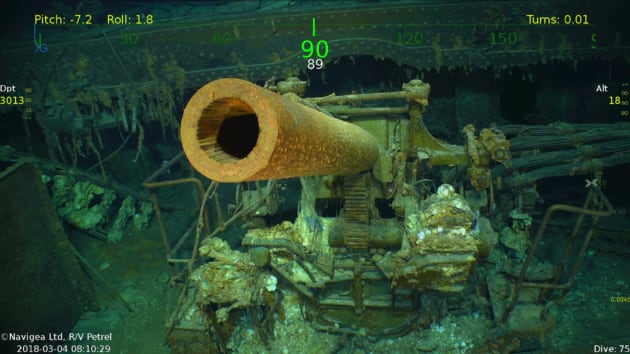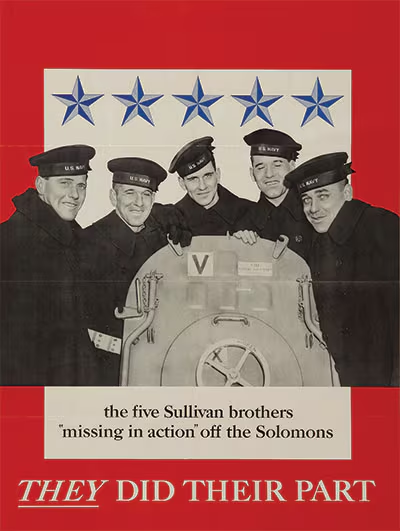The USS Juneau (CL-52) was struck by two Japanese torpedoes during the Battle of Guadalcanal in November 1942, the second of which is believed to have struck the weapons magazine, sparking a massive explosion that ripped the Atlanta-class light cruiser in half, sinking it in only 30 seconds and killing hundreds instantly.
A total of 687 men from the Atlanta-class light cruiser died in the attack, including all five Sullivan brothers, whose name has since been given to two Navy warships, most recently the guided missile destroyer The Sullivans (DDG-68). The first, which served during World War II and the Korean War, is now a museum ship in Buffalo, New York.
After sinking, Juneau’s watery resting place remained unknown until two days ago on St. Patrick’s Day, when the crew of the Research Vessel Petrel, led by Microsoft co-founder Paul Allen, located the wreck nearly 4,200 meters — or a distance of 2.6 miles — beneath the surface in the South Pacific.
RELATED

Despite its rapid destruction, more than 100 of Juneau’s crew reportedly survived the attack. But because of the speed in which the ship went under, and with the ever-present threat of additional Japanese attacks, American rescue efforts would not get underway until eight days later. By then, only 10 survivors remained.
The five Sullivan brothers — Joseph, Francis, Albert, Madison and George — pushed back against the Navy’s policy of separating siblings, insisting that they serve together aboard the same ship. Their tragic end would cement their legendary status in naval history and would go on to serve as a rallying cry for the United States during throughout WWII.
“The story of the USS Juneau crew and Sullivan brothers epitomize the service and sacrifice of our nation’s greatest generation,” Vice Adm. Rich Brown, commander of Naval Surface Forces, told the editors of Paul Allen’s website.
Just over two weeks ago, the R/V Petrel made another astonishing discovery when it located the sunken aircraft carrier USS Lexington (CV-2), along with its aircraft, 500 miles off the coast of Australia.
And in August, an Allen-led R/V Petrel expedition discovered the wreck of the USS Indianapolis, which remains the Navy’s single worst loss at sea, about 5,500 meters below the surface.
Nearly 900 crew were killed after the Indianapolis was struck by Japanese torpedoes — many by sharks. Of the 1,196 sailors and Marines on board, only 316 came out of the water.
“As Americans, all of us owe a debt of gratitude to everyone who served and who continue to serve our country for their courage, persistence and sacrifice,” Allen wrote on his website following the discovery of the Lexington.
Juneau was commissioned less than a year before she was sent to Davy Jones’ locker.

J.D. Simkins is the executive editor of Military Times and Defense News, and a Marine Corps veteran of the Iraq War.




